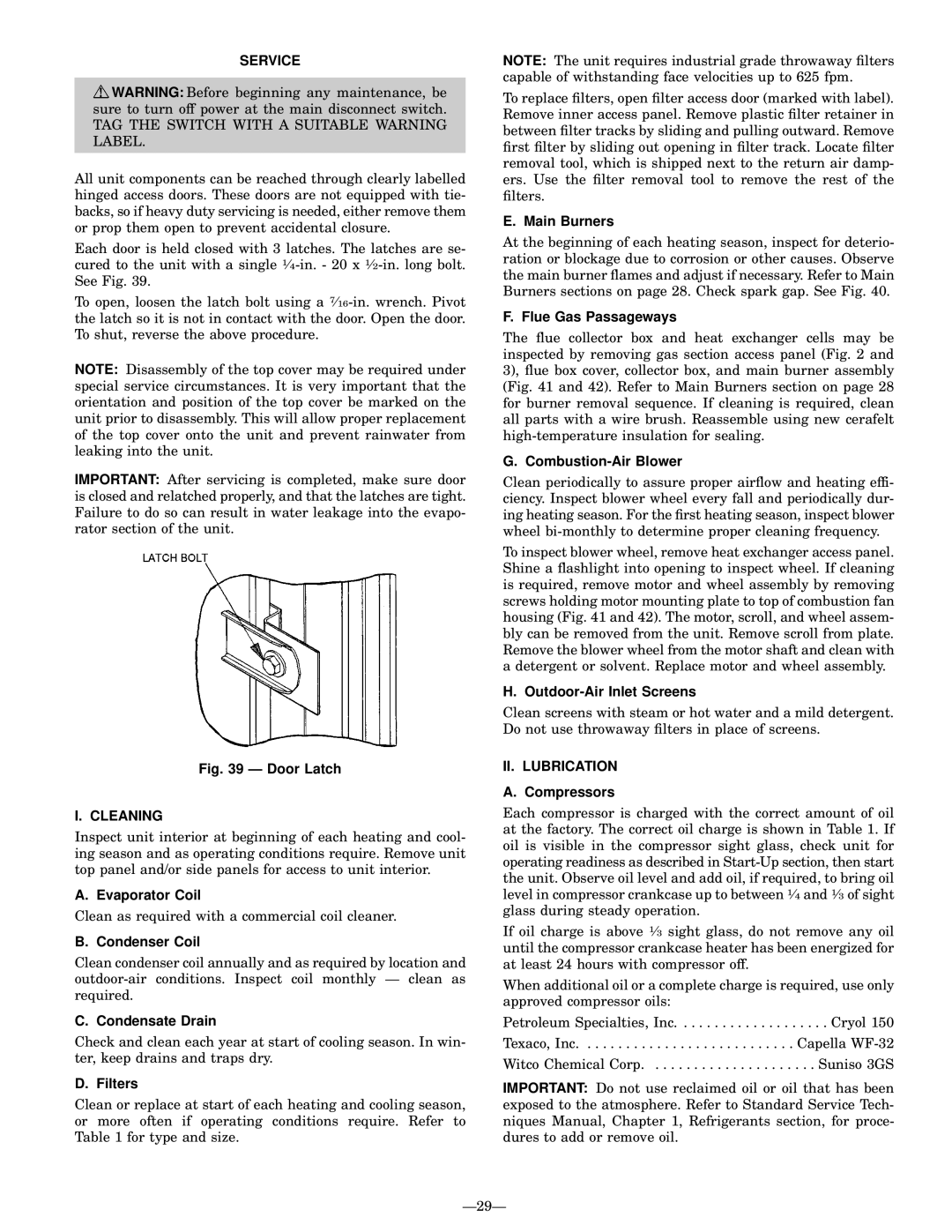580G specifications
The Bryant 580G is a high-efficiency gas furnace designed to deliver optimal heating performance while maximizing energy savings. This model stands out in the Bryant product lineup due to its advanced features and robust technology, making it a popular choice for homeowners seeking reliable comfort in colder climates.One of the key characteristics of the Bryant 580G is its efficiency rating. With an annual fuel utilization efficiency (AFUE) of up to 92.1%, this furnace ensures that a substantial portion of the fuel consumed is converted into heat, minimizing energy waste and reducing utility bills. This high-efficiency performance is particularly beneficial for those looking to lower their environmental footprint and operate a more sustainable home heating system.
The 580G uses a two-stage heating process, which allows it to operate at two levels of output. During mild weather, the furnace can run on a lower setting, providing gentle warmth while conserving energy. When temperatures drop, the system automatically ramps up to a higher output to maintain comfort. This feature not only enhances energy efficiency but also helps to eliminate temperature fluctuations, ensuring consistent warmth throughout the home.
Noise reduction technology is another remarkable aspect of the Bryant 580G. Equipped with a variable speed blower motor, this furnace operates quietly, providing a more peaceful indoor environment. The motor allows for customizable airflow, which further aids in maintaining an even temperature across different rooms and spaces.
The furnace is built with high-quality materials and features a compact design, making it a suitable option for various installation locations. Additionally, it is compatible with Bryant’s EcoNet Smart Home Management System, which enables homeowners to monitor and control their heating system remotely via a smartphone app. This integration enhances convenience and allows for timely adjustments to heating schedules, promoting energy savings.
Safety is a priority with the 580G. It features an integrated safety switch and a reliable flame sensor to ensure safe operation. With its durable construction and thoughtful engineering, the Bryant 580G is designed to withstand the demands of everyday use while providing peace of mind to homeowners.
In summary, the Bryant 580G gas furnace combines high efficiency, advanced technology, and user-friendly features. Its ability to operate quietly, adapt to temperature changes, and integrate with smart home technology makes it a leading choice for efficient home heating solutions. This furnace not only provides comfort but also offers long-term energy savings, making it a smart investment for any household.

